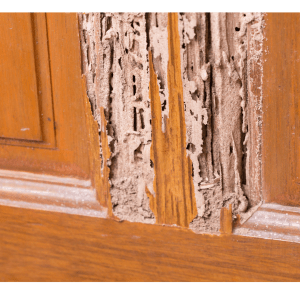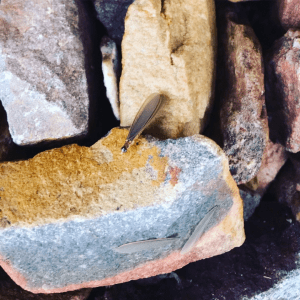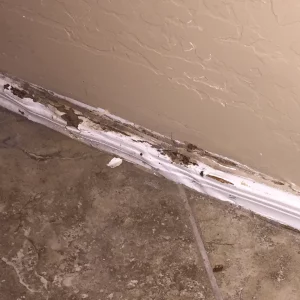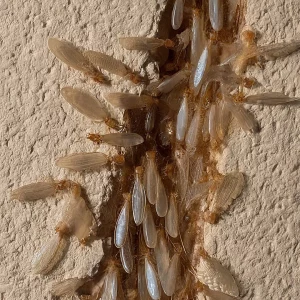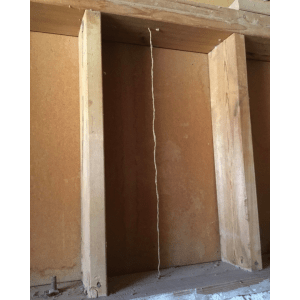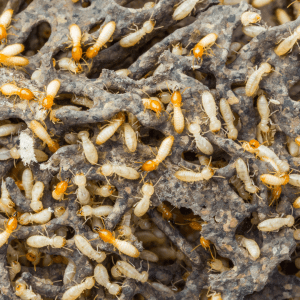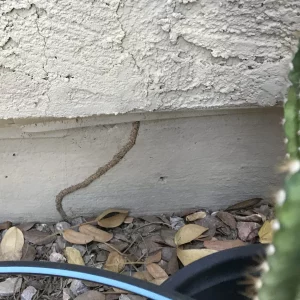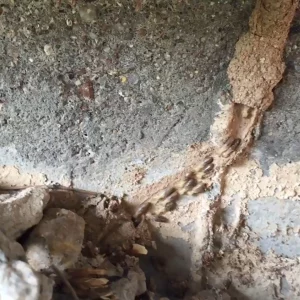San Tan Valley, Mesa, Chandler, Gilbert, Florence, Apache Junction
Termite Control
Queen Creek AZ
Termite signs and treatment in Queen Creek AZ
Professional Termite Control in Queen Creek AZ
Termites are one of the most difficult pests to detect because they work behind the scenes, chewing through the wooden structures of your home or business. While other pests like scorpions, spiders, ants, rodents, and gophers can certainly pose health risks and property damage, there is nothing quite as destructive as a termite infestation. In fact, they cause about $30 billion worth of damage to structures and crops in the United States every year.
Why is it often difficult to detect termites inside a home?
Termites often go undetected for years at a time, the damage they cause can be quite extensive and expensive. Once a termite colony sets up shop in your home, they can remain there unnoticed for several years as they continue to feed on wooden structural supports. Unfortunately, because they go unnoticed for so long, significant structural damage can be present before you are even aware the termites are there.
Termite Control For New Homes
Moving into a brand new home is an exciting time! It’s a fresh start, a blank canvas to build your dream life. But before you unpack those boxes and settle in, it’s crucial to take steps to protect your investment from a silent threat: termites.
Even in a newly constructed home, the risk of termite infestation is real. Construction materials often contain wood, a prime food source for these destructive insects. Plus, the surrounding soil may harbor existing termite colonies.
All Clear Pest Control is your trusted partner in protecting your new home from termites and other local pests. Our experienced technicians conduct thorough inspections and provide effective, long-lasting termite solutions.
10 Signs of Termites in Arizona
How can you be sure you have a termite infestation on your hands? There’s no way to know for certain unless you have a professional termite exterminator inspect the area. But here are some signs that you may have a termite colony working behind the scenes.
Of course, early detection is key. From damaged wood to discarded wings, a termite inspector will answer your questions and provide a plan of action and a peace of mind. Contact the termite specialists at All Clear Pest Control if you suspect termite activity inyour Arizona home.
-
1. Buckling or blistering in wood flooring:
Subterranean termites damage your subfloor, which results in a discolored or wavy appearance to the surface. -
2. Hollowed or damaged wood:
Termites hollow out wood studs within walls, which can result in an empty sound when you tap on them. Plus, they remove the cellulose when chewing through wood, leaving behind long grooves that look like a maze or honeycomb. -
3. Swarmers:
These are flying termites that left their colony in search of mates and a new colony to form. In Arizona, most termite species swarm in mid to late summer. -
4. Discarded termite wings:
You’ll find these on windowsills, and near doors and other access points. This is because they fly toward the light coming in from these access points, intentionally twisting off their wings when landing because they will not have a use for them again. -
5. Sticking doors and windows:
When eating through wood, termites can cause buckling or warping, which can make it difficult to open and close windows and doors. -
6. Mud tubes:
These can be found at the point where the ground meets the house. Subterranean termites survive in certain temperatures and humidity levels, and create tunnels to keep out cool, dry air. -
7. Frass:
These small mounds of pellets, found on windowsills or floors, resemble coffee grounds or saw dust. -
8. Damaged or bubbling drywall:
Look for pin-sized holes or bubbles in drywall or wallpaper, capped with specks of dirt. -
9. Dipped ceilings:
As termites eat through your home’s support beams, those beams can start to buckle and cause your ceilings to dip. -
10. Live termites:
Sometimes, you will stumble across actual termites, particularly when you are renovating your home. Keep in mind that just because you removed the damaged wood as part of the demo doesn’t mean you got rid of the infestation. Termites can also infiltrate the soil around your home, or anywhere on your property that they can continue to feed on cellulose.
If you have noticed any of the above signs of termite activity, call your trusted termite control expert in Mesa, Gilbert, Apache Junction or surrounding areas. Keep in mind, termites can be present all year long, but particularly thrive in the wet conditions provided by rainy season in Arizona (June through September).
If you suspect termite activity in your AZ home or business, call All Clear Pest Control for a free quote at 480-779-7378 or fill out our online form. We proudly serve Queen Creek, Santan Valley and surrounding areas.

